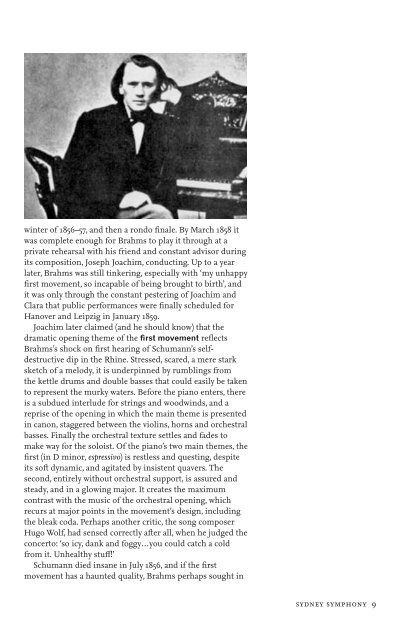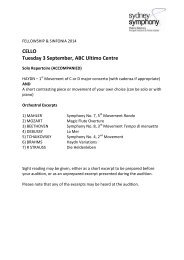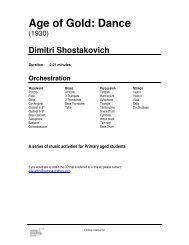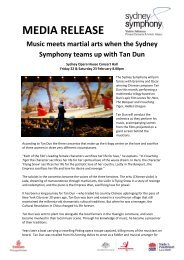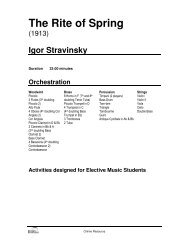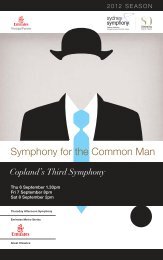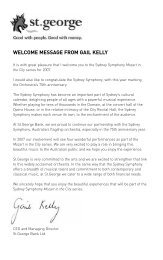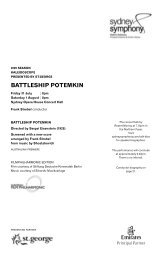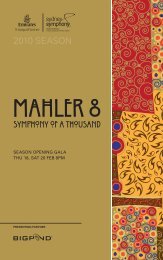Symphonic Dances - Sydney Symphony
Symphonic Dances - Sydney Symphony
Symphonic Dances - Sydney Symphony
You also want an ePaper? Increase the reach of your titles
YUMPU automatically turns print PDFs into web optimized ePapers that Google loves.
winter of 1856–57, and then a rondo fi nale. By March 1858 it<br />
was complete enough for Brahms to play it through at a<br />
private rehearsal with his friend and constant advisor during<br />
its composition, Joseph Joachim, conducting. Up to a year<br />
later, Brahms was still tinkering, especially with ‘my unhappy<br />
fi rst movement, so incapable of being brought to birth’, and<br />
it was only through the constant pestering of Joachim and<br />
Clara that public performances were fi nally scheduled for<br />
Hanover and Leipzig in January 1859.<br />
Joachim later claimed (and he should know) that the<br />
dramatic opening theme of the fi rst movement refl ects<br />
Brahms’s shock on fi rst hearing of Schumann’s selfdestructive<br />
dip in the Rhine. Stressed, scared, a mere stark<br />
sketch of a melody, it is underpinned by rumblings from<br />
the kettle drums and double basses that could easily be taken<br />
to represent the murky waters. Before the piano enters, there<br />
is a subdued interlude for strings and woodwinds, and a<br />
reprise of the opening in which the main theme is presented<br />
in canon, staggered between the violins, horns and orchestral<br />
basses. Finally the orchestral texture settles and fades to<br />
make way for the soloist. Of the piano’s two main themes, the<br />
fi rst (in D minor, espressivo) is restless and questing, despite<br />
its soft dynamic, and agitated by insistent quavers. The<br />
second, entirely without orchestral support, is assured and<br />
steady, and in a glowing major. It creates the maximum<br />
contrast with the music of the orchestral opening, which<br />
recurs at major points in the movement’s design, including<br />
the bleak coda. Perhaps another critic, the song composer<br />
Hugo Wolf, had sensed correctly after all, when he judged the<br />
concerto: ‘so icy, dank and foggy…you could catch a cold<br />
from it. Unhealthy stuff !’<br />
Schumann died insane in July 1856, and if the fi rst<br />
movement has a haunted quality, Brahms perhaps sought in<br />
sydney symphony 9


